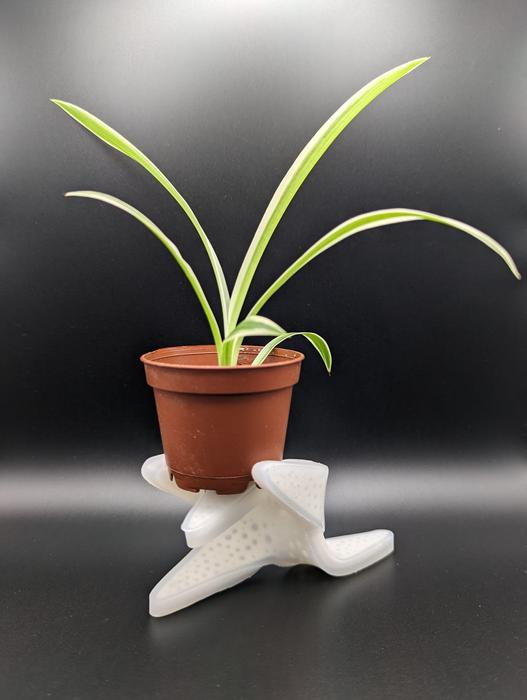Researchers have recently developed a flexible-yet-sturdy morphing structure inspired by the starfish skeleton that exhibits 4D morphing features with promising applications for robotics, aviation, and medical devices.

Credit: Raman Raman
Researchers have recently developed a flexible-yet-sturdy morphing structure inspired by the starfish skeleton that exhibits 4D morphing features with promising applications for robotics, aviation, and medical devices.
“Starfish possess the remarkable ability to effortlessly hold themselves in any body posture by changing the stiffness of their endoskeleton,” says Raman, a PhD student in the Biological Structures and Biomimetics workgroup at Hochschule Bremen – City University of Applied Sciences Bremen, Germany.
Ossicles are calcite microstructures inside starfish bodies that are connected in a network by collagen fibres to form the endoskeleton. This strong but simple structure allows them to hold a wide variety of body postures with minimal energy use.
“We became fascinated with this biological solution to a complex engineering problem,” says Mr Raman. “Our goal was to unlock the secrets of their intricate skeleton and translate those principles into a novel material with similar remarkable properties.”
Mr Raman and his team used a multidisciplinary approach for this project. By using high resolution X-ray CT scans, they visualised the starfish skeletal structures and used mathematical models (Finite Element Analysis and Multibody Simulations) to understand the complex interlinked mechanics of the skeletal components.
“For the first time, we are able to show the complex 3D structure of the starfish skeleton and the fine ultrastructure of the small ossicles,” says Mr Raman. “We have now used these insights for the biomimetic design process of our own morphing structure, incorporating rapid prototyping techniques for fabrication.”
Mr Raman and his team have used 3D printing to produce different working prototypes that can accomplish an impressive range of physical challenges. “Our patented starfish-inspired morphing structure shows self-locking, continuous bending, self-healing, and shape memory features,” says Mr Raman.
The scalability, low cost and relative ease of manufacture of this morphing structure provides many opportunities for industry applications, including robotics, aviation, and biomedical devices such as prosthetics and implants.
This study was funded by the German Federal Ministry of Education and Research (BMBF) FHprofUnt 2018 program, project number 13FH150PX8 (JHD, SL) and the Hochschule Bremen PhD scholarship (R).
This research is being presented at the Society for Experimental Biology Annual Conference in Prague on the 2-5th July 2024.



